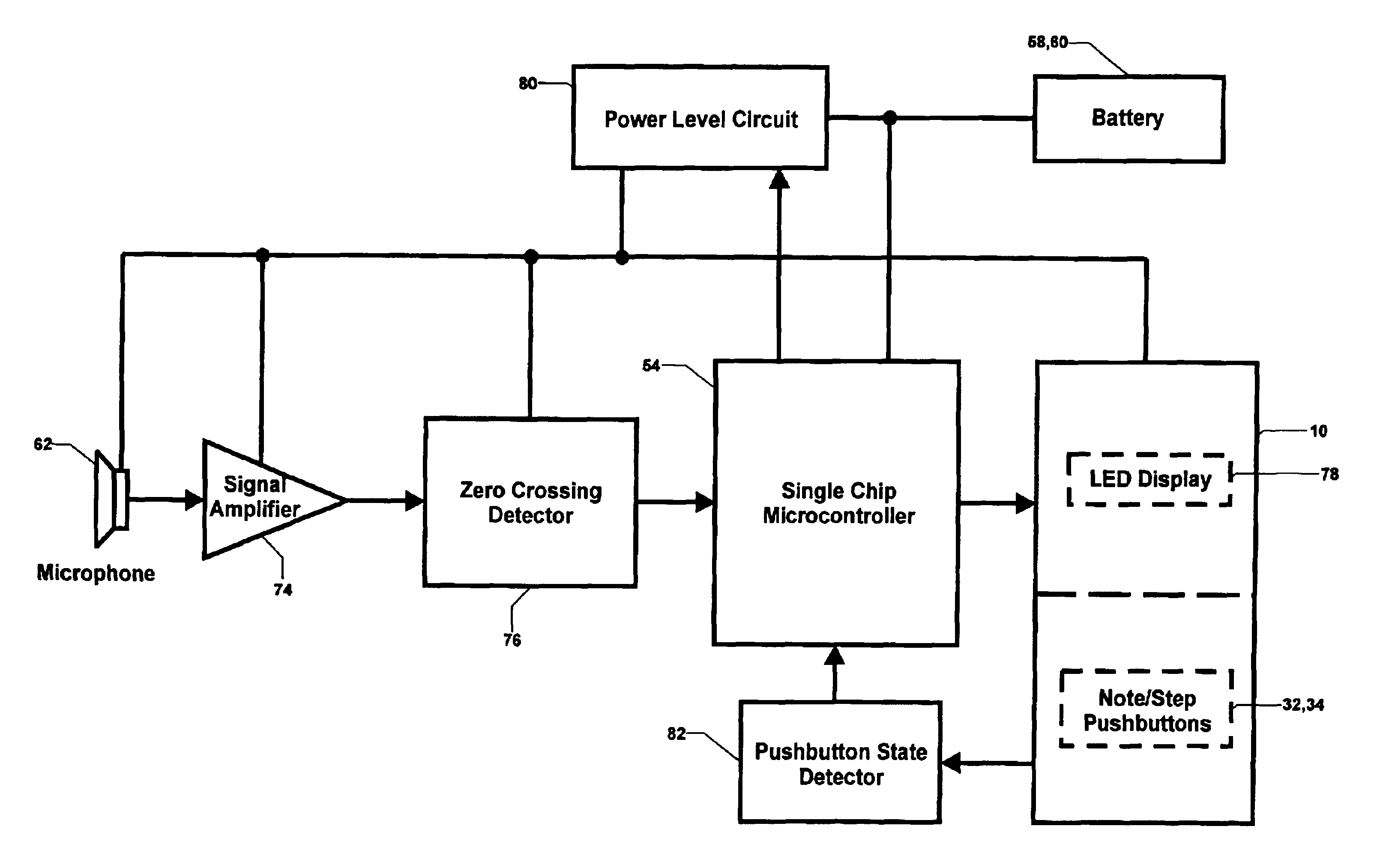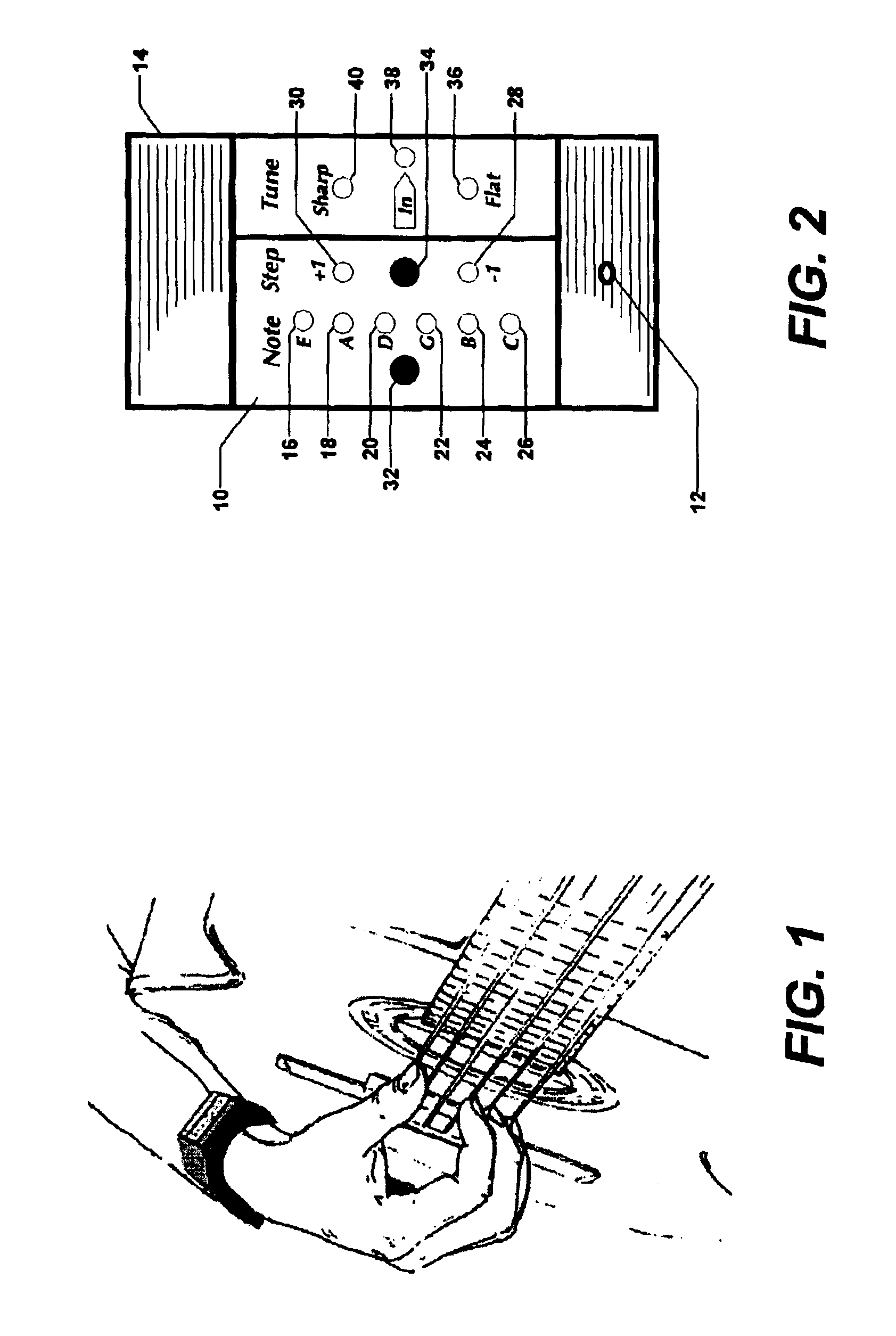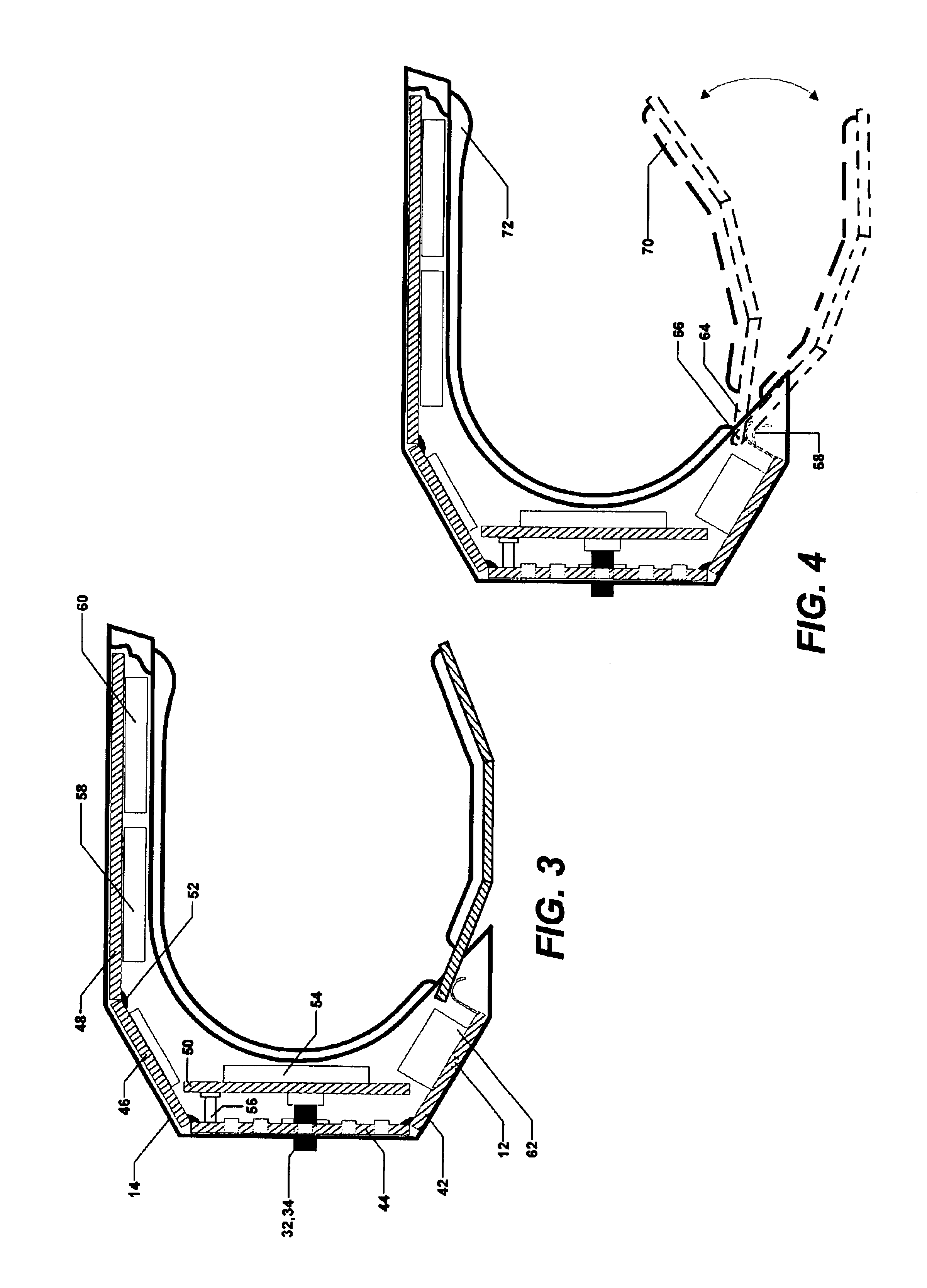Wrist musical instrument tuner
a technology for tuning devices and musical instruments, applied in the field of wrist musical instrument tuners, can solve the problems of affecting the use of stand-alone acoustic tuning devices, affecting the sound quality of instruments, etc., and achieves the effects of simple ergonomic operation, enhanced acoustic musical tone, and easy wear
- Summary
- Abstract
- Description
- Claims
- Application Information
AI Technical Summary
Benefits of technology
Problems solved by technology
Method used
Image
Examples
Embodiment Construction
[0026]When tuning a musical instrument the instant tuner may be placed, in a manner hereinafter described, on either the left or right wrist of the musician. Additionally, as is shown in FIG. 1, if the musical instrument is, like a guitar or mandolin, normally cradled by the musician during play, then the tuner will necessarily always be within several inches of the instrument's soundboard. The parts of the preferred embodiment of the instant tuner are arranged to particularly exploit this playing position.
[0027]Referring now to FIG. 2, there is shown a panel 10 which includes a plurality of light emitting diodes (LEDs) 16 through 30 and 36 through 40, momentary pushbuttons 32 and 34, and an open port 12, all of which are features of tuner casing 14. Port 12 is a through opening in casing 14 which permits external sound to reach the tuner's internal circuitry.
[0028]There are two operational states of the instant tuner: the acquisition state and the sleep state. During the acquisitio...
PUM
 Login to View More
Login to View More Abstract
Description
Claims
Application Information
 Login to View More
Login to View More - R&D
- Intellectual Property
- Life Sciences
- Materials
- Tech Scout
- Unparalleled Data Quality
- Higher Quality Content
- 60% Fewer Hallucinations
Browse by: Latest US Patents, China's latest patents, Technical Efficacy Thesaurus, Application Domain, Technology Topic, Popular Technical Reports.
© 2025 PatSnap. All rights reserved.Legal|Privacy policy|Modern Slavery Act Transparency Statement|Sitemap|About US| Contact US: help@patsnap.com



